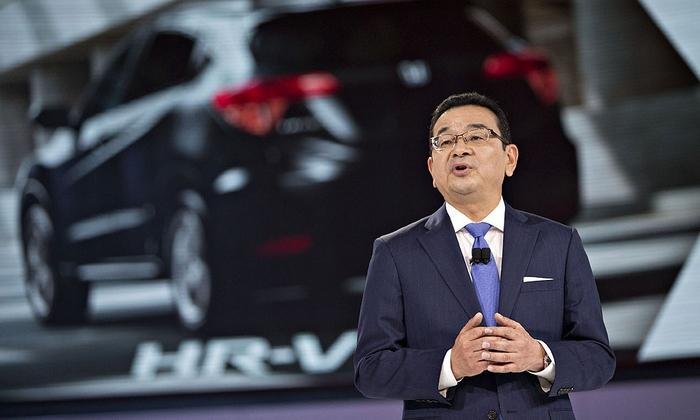Honda CEO To Shift Gears, Distance Sales Staff From Styling

The thrust of the changes, to be unveiled by Hachigo in Tokyo on Wednesday, will be to reduce the influence of sales and marketing teams on car design, reversing moves by previous chief Takanobu Ito, the people said.
"Over the years, our product development process became overly complex and slow, involving a huge number of engineers and sales and marketing people," said one of the two Honda executives. As a result, "we began producing watered down, uninspiring, what you might call designed-by-committee, cars."
Hachigo, 55, has taken soundings internally and set up a small task force of mainly younger fifty-something executives, said the insiders, who did not want to be named as they are not authorized to speak to the media.
As a result, he plans a re-balance of power between engineers and marketing on car design, they said, noting sales people focus more on a car's affordability than its performance.
"Sales people involved in product planning are more focused on customers' immediate needs. We need to stay focused on that, but it's not much help in figuring out what kind of car we should be putting out 5-10 years down the road," the second executive said.
"Tech people should design cars more freely, but take responsibility if the car isn't successful."
Hachigo, who has an engineering background, is likely to limit sales executives' participation at key product planning meetings, including the annual "long-term strategic conference" that usually is held in the spring, they said.
Honda's chief spokesman Kaoru Tanaka declined to comment.
Tech autonomy
Hachigo will give more autonomy to Honda R&D Co., the technology unit, and rein in some of the independence at the group's regional blocs in Japan, North America, Latin America, Asia-Pacific, Europe and China.
Increased localization has led to regional differences in engine size and features such as hybrid systems and all-wheel drivetrains in global models including the Accord, Civic, Fit and CR-V in order to be cost-competitive, the executives said.
Hachigo is also likely to return to Japan the planning and development work on vehicle platforms and core technologies that had begun to migrate to regions in past years, they added.
In a management reshuffle announced on Tuesday, Yoshiyuki Matsumoto, Hachigo's rival for the top job last year, moved from automotive operations chief to head of Honda's r&d center, a key technology post.
Hachigo is expected to restructure Honda's global Automotive Operations headquarters, which looks after product planning among other functions.
Senior engineers previously relocated to the Tokyo head office to promote cooperation with sales divisions are now likely to move back to Honda's tech center near Utsunomiya, north of the capital, the executives said.
The strategic overhaul will also see Honda revert to a concept of 'sogo hokan', or mutual interdependence among production facilities around the world, they said.
They noted that Honda failed to make the most of last year's strong U.S. market growth and a weaker yen because it had not set aside enough capacity in Japan to produce cars to sell in the United States, which accounts for around a third of global sales.
The immediate target, the executives said, is to boost sales globally with more innovative and distinctive cars, and eliminate excess capacity of around 750,000 cars a year.
Honda, which is battling the fallout from a massive global recall over faulty Takata Corp. airbags, sold around 4.75 million vehicles last year and had the capacity to produce 5.5 million.
Related News
